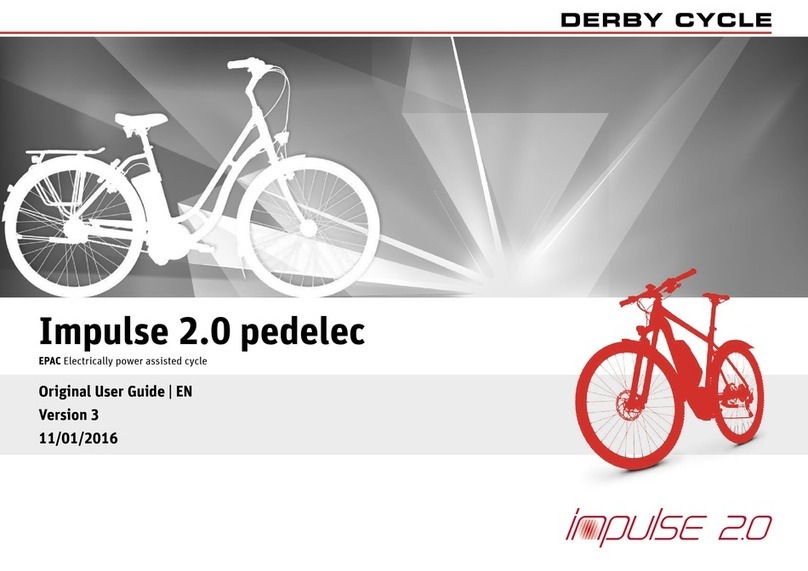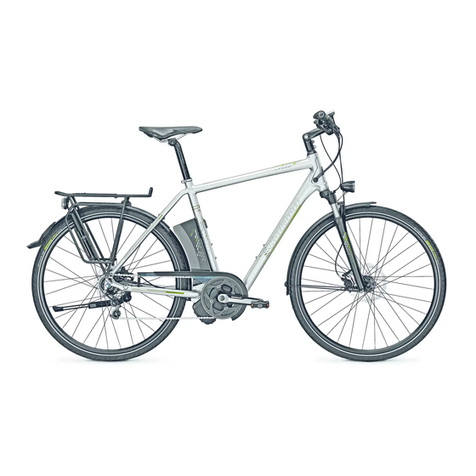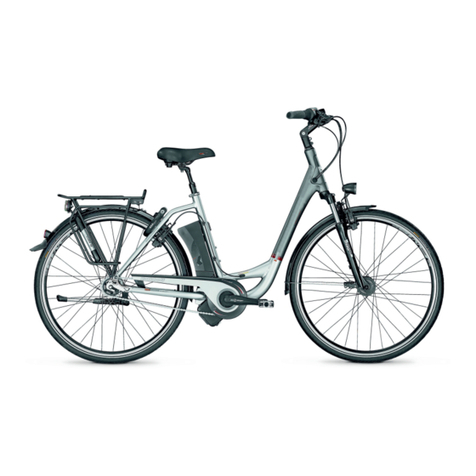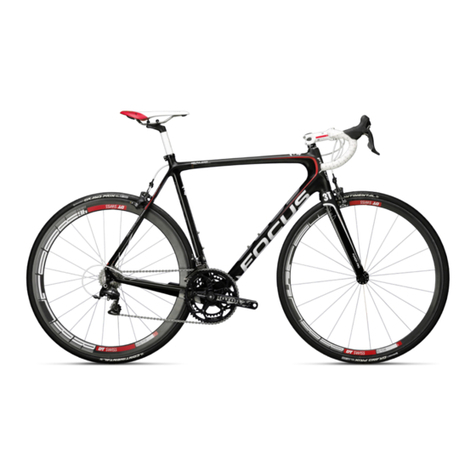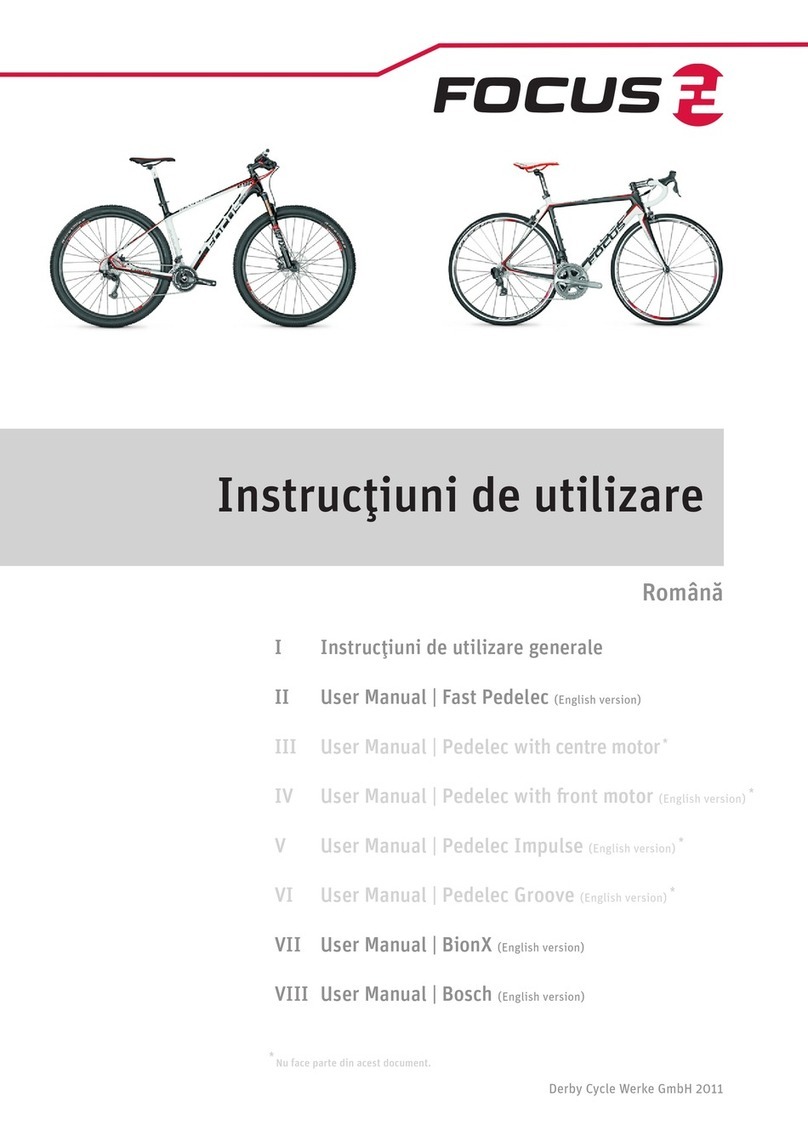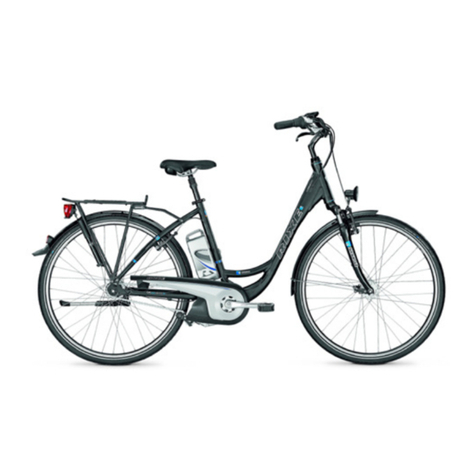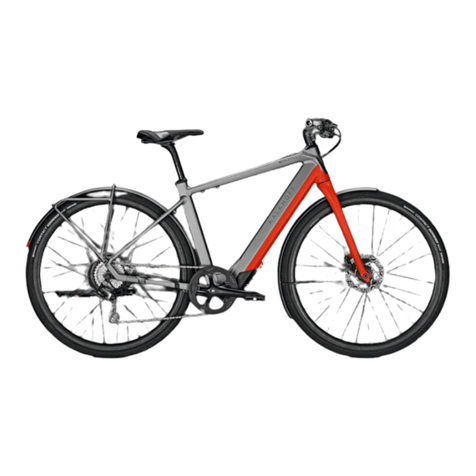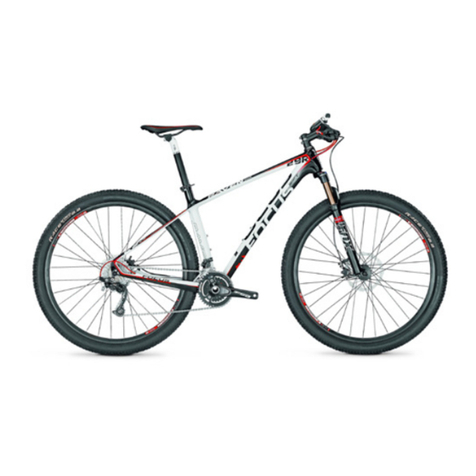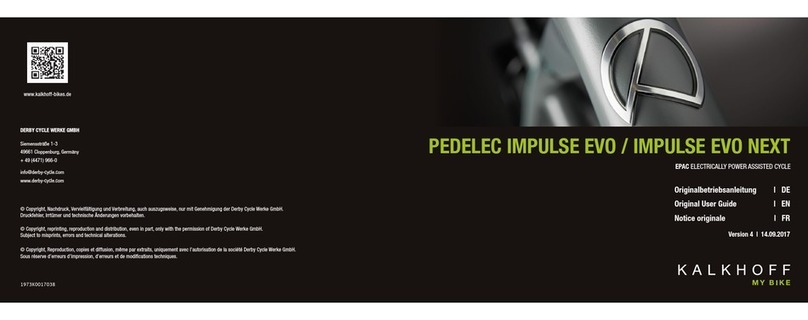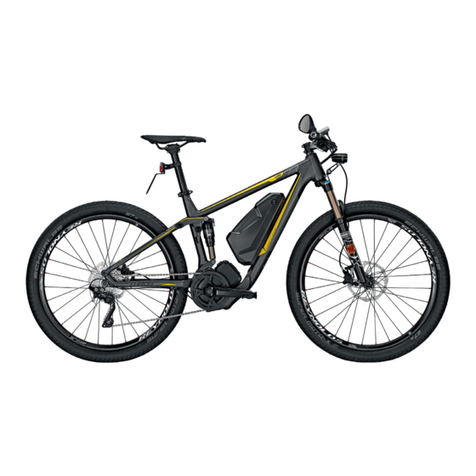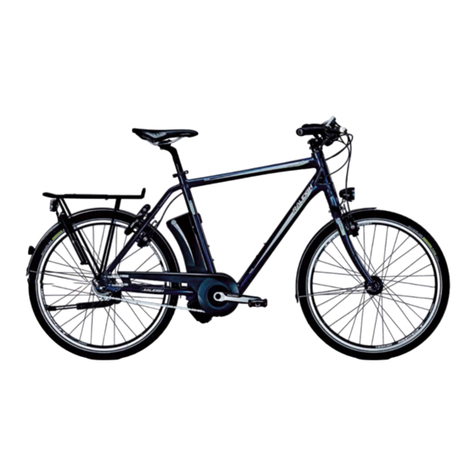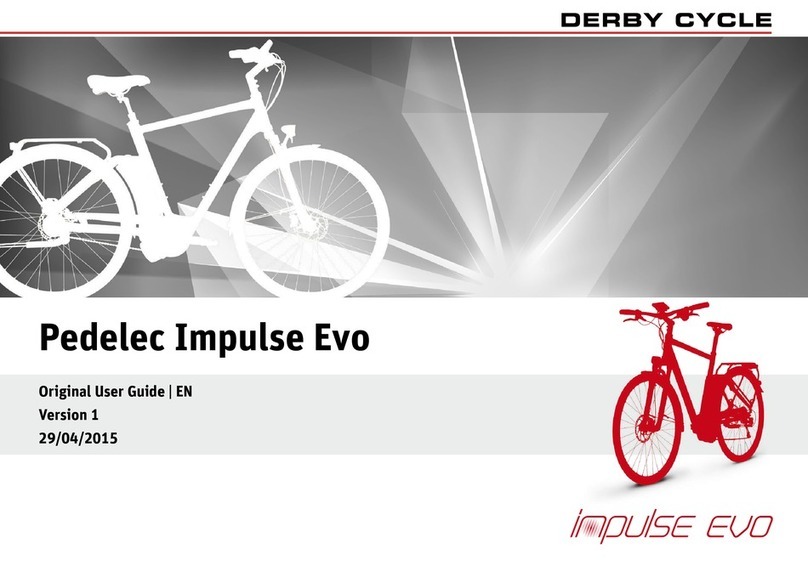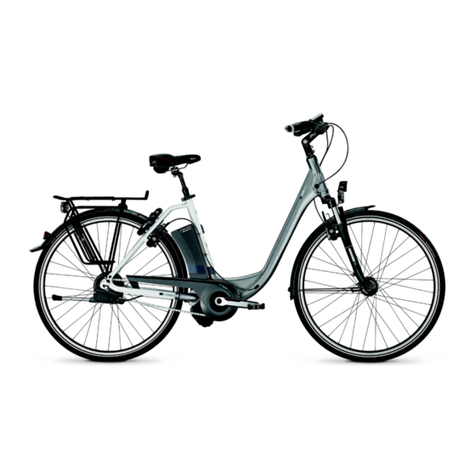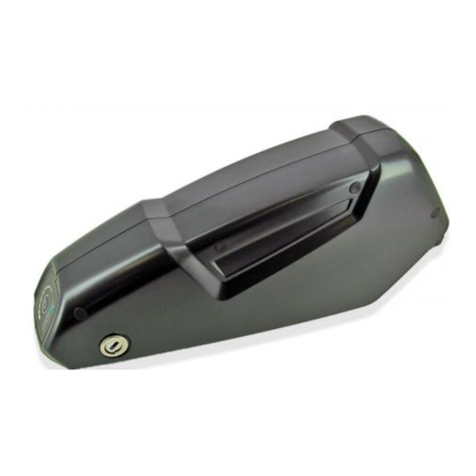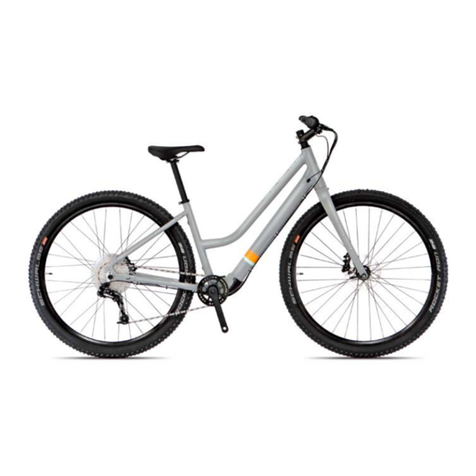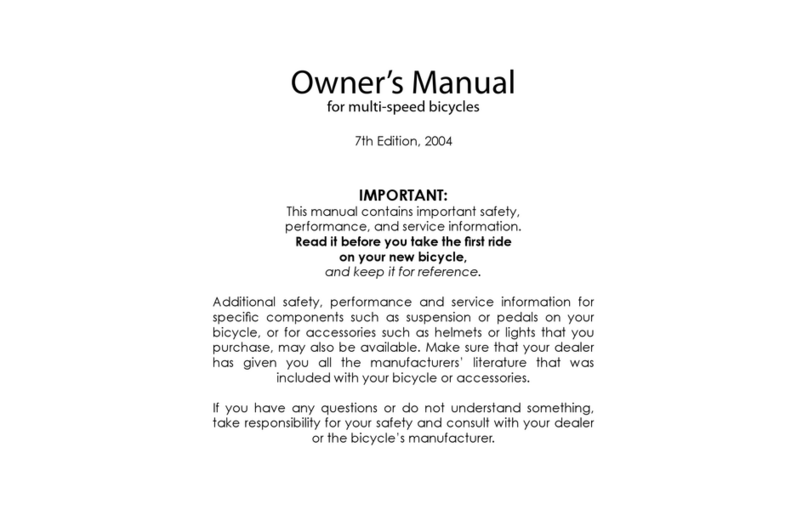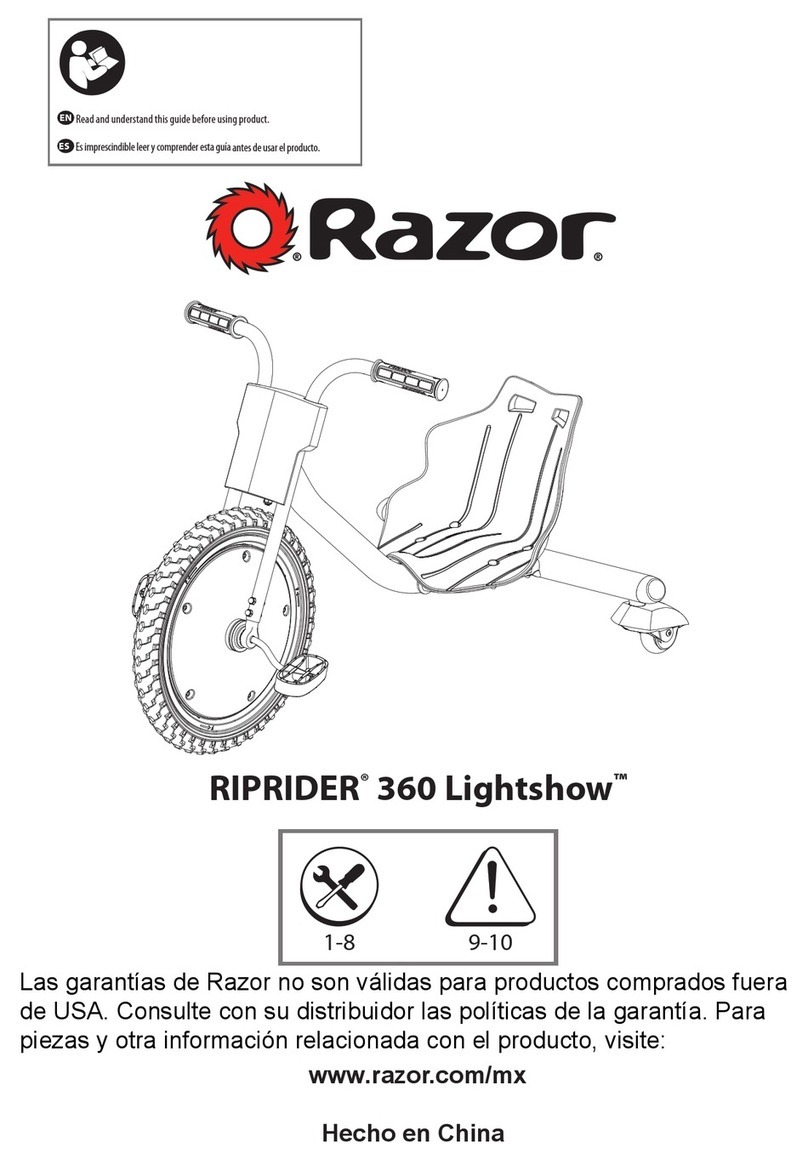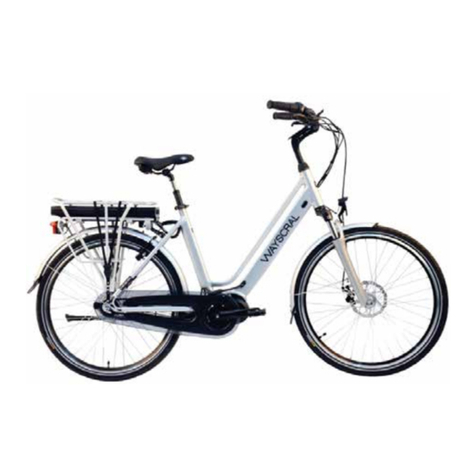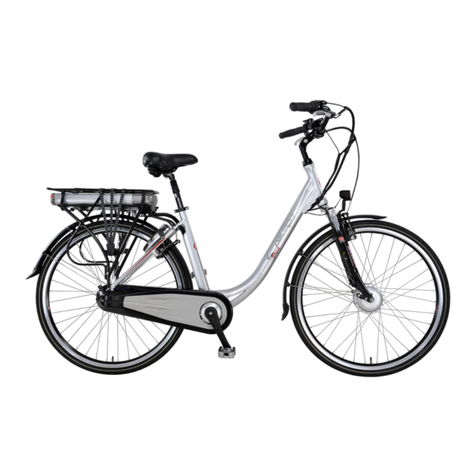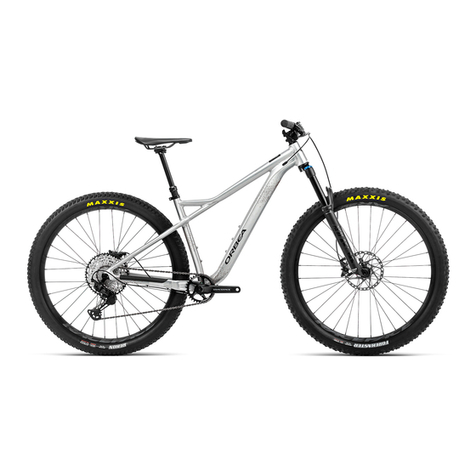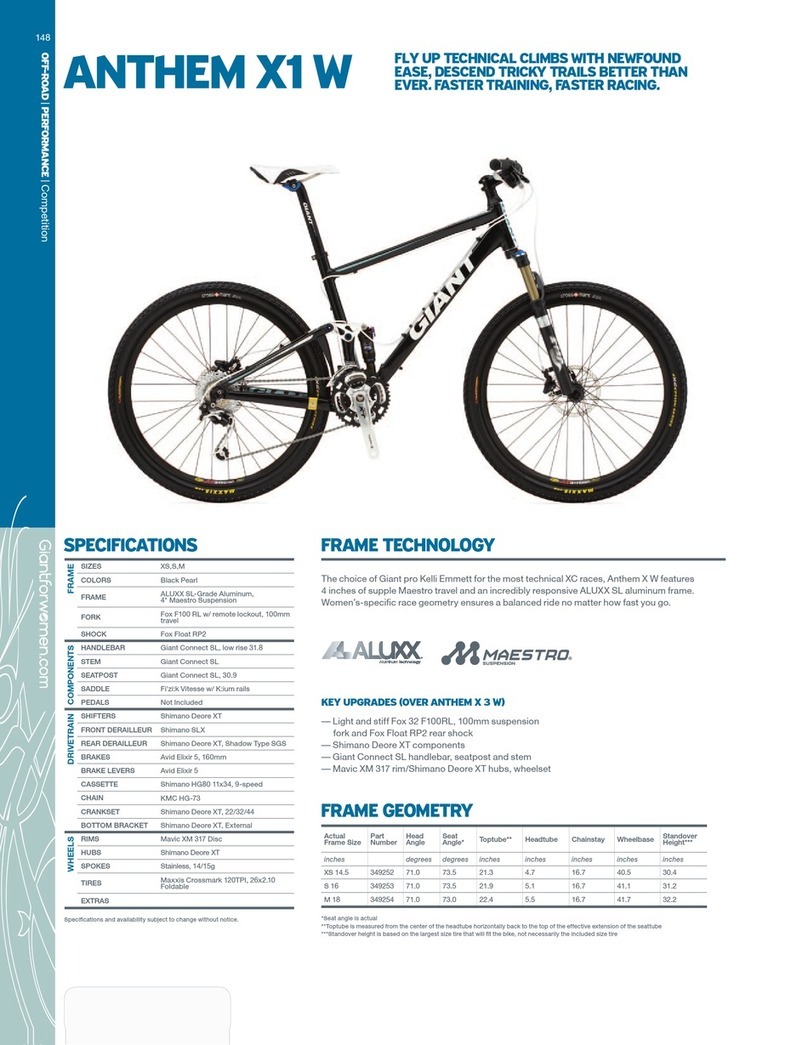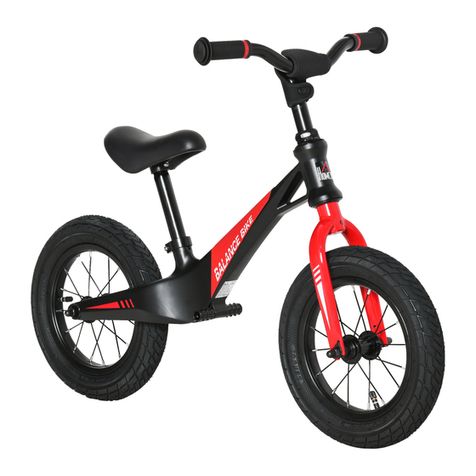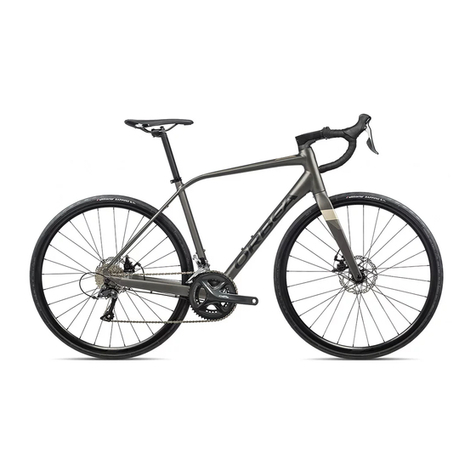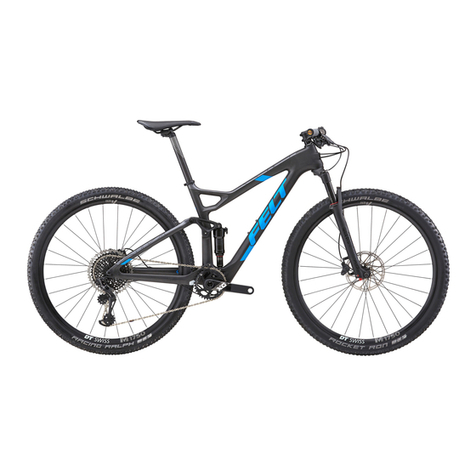
Bicycle Owner’s Manual | Pedelec Impulse Evo RS Speed Version 1 7
tightening force can result in component failure, which can cause
you to loose control and fall.
▸ Make sure nothing is loose. Lift the front wheel o the ground by two
or three inches, then let it bounce on the ground. Anything sound, feel or
look loose? Do a visual and tactile inspection of the whole bike. Any loose
parts or accessories? If so, secure them. If you’re not sure, don`t start the
ride. First ask someone with experience to check.
▸ Tires & Wheels: Make sure tires are correctly inated (see Section
4.G.1). Check by putting one hand on the saddle, one on the intersection
of the handlebars and stem, then bouncing your weight on the bike while
looking at tire deection. Compare what you see with how it looks when
you know the tires are correctly inated; and adjust if necessary.
▸ Tires in good shape? Spin each wheel slowly and look for cuts in the
tread and sidewall. Replace damaged tires before riding the bike.
▸ Wheels true? Spin each wheel and check for brake clearance and
side-to-side wobble. If a wheel wobbles side to side even slightly, or rubs
against or hits the brake pads, take the bike to a qualied bike shop to
have the wheel trued.
CAUTION: Wheels must be true for rim brakes to work eectively.
Wheel trueing is a skill which requires special tools and experience.
Do not attempt to true a wheel unless you have the knowledge,
experience and tools needed to do the job correctly.
▸ Wheel rims clean and undamaged? Make sure the rims are clean and
undamaged at the tire bead and, if you have rim brakes, along the braking
surface. Check to make sure that any rim wear indicator marking is not or
still visible at any point on the wheel rim depending on the type of wear
indicator used on your bike.
C. Mechanical Safety Check
Routinely check the condition of your bicycle before every ride.
▸ Nuts, bolts screws & other fasteners: Because manufacturers use a
wide variety of fastener sizes and shapes made in a variety of materials,
often diering by model and component, the correct tightening force
or torque cannot be generalized. To make sure that the many fasteners
on your bicycle are correctly tightened, refer to the Fastener Torque
Specications in Appendix D of this manual or to the torque specications
in the instructions provided by the manufacturer of the component in
question. Correctly tightening a fastener requires a calibrated torque
wrench. A professional bicycle mechanic with a torque wrench should
torque the fasteners on you bicycle. If you choose to work on your own
bicycle, you must use a torque wrench and the correct tightening torque
specications from the bicycle or component manufacturer or from your
dealer. If you need to make an adjustment at home or in the eld, we urge
you to exercise care, and to have the fasteners you worked on checked by
your dealer as soon as possible. Note that there are some components which
require special tools and knowledge. In Sections 3 and 4 we discuss the items
which you may be able to adjust yourself. All other adjustments and repairs
should be done by a qualied bicycle mechanic.
WARNING: Check all fasteners and quick releases for correct and safe
function, even if the bike was left unattended just for a short period
of time!
WARNING: Correct tightening force on fasteners –nuts, bolts,
screws– on your bicycle is important. Too little force, and the
fastener may not hold securely. Too much force, and the fastener can
strip threads, stretch, deform or break. Either way, incorrect



















